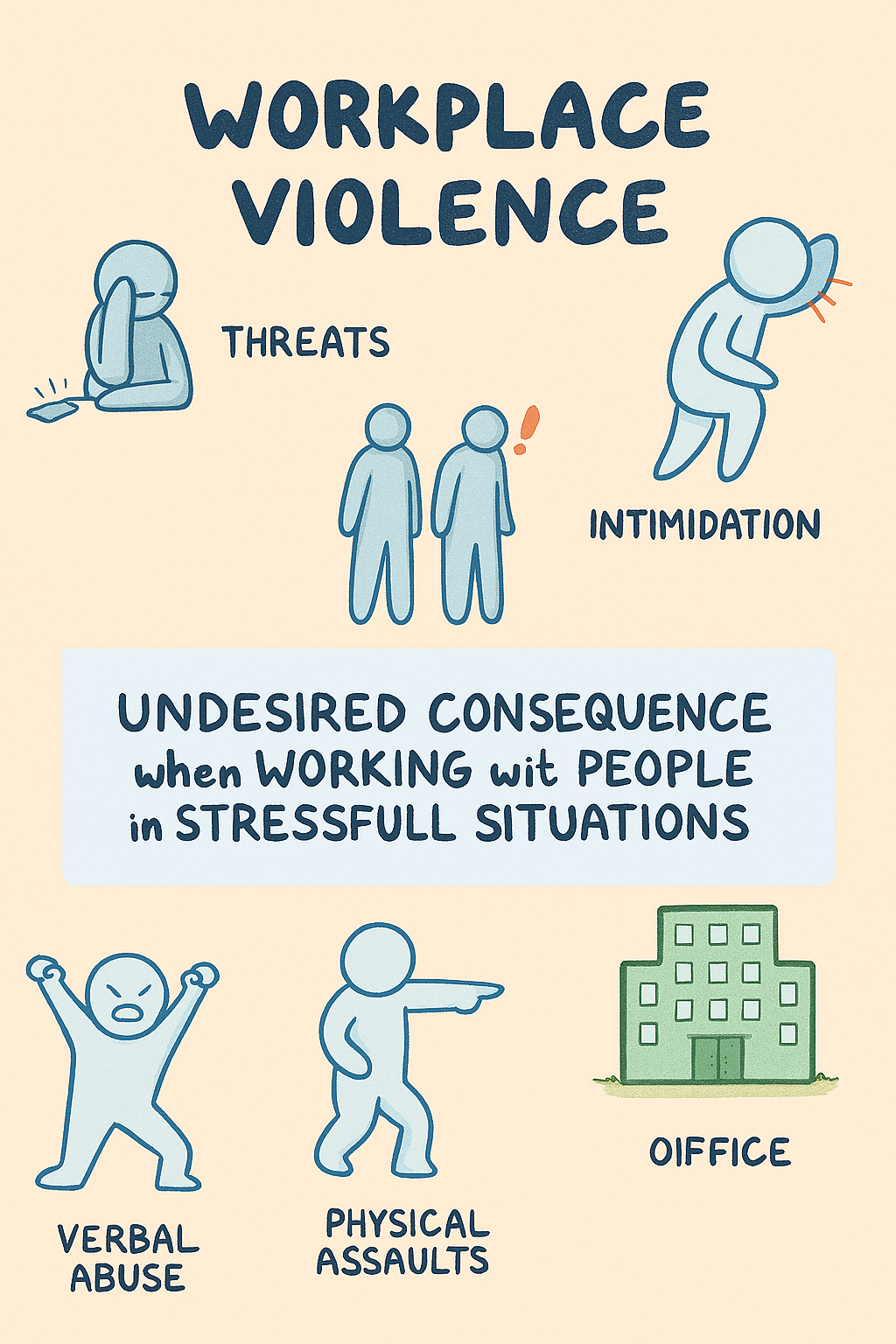Office violence preparedness must become a non-negotiable aspect of workplace safety strategies.
While many safety protocols focus on high-risk environments like factories, the truth is that violence can and does occur in office settings.

From verbal threats to physical altercations, the risks are real—and often overlooked.
- Understanding Office Violence: A Growing Concern
- Common Triggers of Violence in Offices
- Key Elements of Office Violence Preparedness
- Technology’s Role in Violence Prevention
- Red Flags and Early Warning Signs
- Management’s Role in a Violence-Free Office
- Office Violence Preparedness Is a Shared Responsibility
- Final Thoughts
Understanding Office Violence: A Growing Concern
Office violence includes any act where employees are abused, threatened, intimidated, or assaulted in their workplace.
These events can range from subtle harassment and bullying to aggressive outbursts or even deadly attacks. Office settings may not seem dangerous, but statistics say otherwise.
According to a U.S. Bureau of Labor Statistics report, nearly 15% of workplace homicides occurred in office settings.
The perception that violence only happens in blue-collar environments creates a dangerous blind spot in corporate safety planning.
Common Triggers of Violence in Offices
Workplace violence doesn’t appear out of nowhere. Often, there are warning signs and triggers that can escalate if not managed:
- Stressful job roles and deadlines
- Poor conflict resolution among team members
- Lack of psychological support or EAPs
- Inadequate supervision or unclear reporting structures
- Dismissals, layoffs, or organizational changes
Understanding these root causes helps organizations create proactive safety frameworks instead of reactive ones.
Key Elements of Office Violence Preparedness
Let’s break down the essential components that build a violence-resistant office culture.
1. Workplace Violence Risk Assessment
Start with a thorough risk assessment. Identify areas such as reception desks, meeting rooms, or isolated offices where violence could be more likely to occur.
- Interview staff for past incidents or near misses
- Review your layout for visibility and access control
- Audit policies related to harassment, terminations, and security
OHSE.ca provides excellent templates and guides for conducting workplace safety assessments.
2. Implementing a Zero-Tolerance Policy
Having a clearly written zero-tolerance policy for violence sends a strong message. This should cover:
- Verbal abuse, threats, and bullying
- Sexual harassment and intimidation
- Physical assault or property damage
- Reporting mechanisms and disciplinary actions
Make this policy visible through onboarding documents, posters, and team meetings.
3. Training and Awareness for Employees
Training is essential. It prepares staff to recognize warning signs, respond appropriately, and report incidents safely. Topics to include:
- De-escalation techniques
- Conflict resolution and communication
- What to do during a violent event
- How to support colleagues after an incident
Investing in violence prevention training, like those offered by CCOHS, can significantly improve response effectiveness.
4. Emergency Response Protocols
Create a response plan just like you would for a fire drill. Ensure staff know:
- Who to alert in case of violence
- How to safely evacuate or shelter-in-place
- What emergency services to call
- How to use panic buttons or alert systems
Have regular drills and tabletop exercises involving HR, security, and building management.
5. Support Systems Post-Incident
The psychological impact of violence can linger long after an event. Employers should provide:
- Access to Employee Assistance Programs (EAPs)
- On-site counseling support
- Clear communication about the incident
- Follow-up interviews to address trauma
These steps foster a sense of care, reduce long-term stress, and maintain productivity.
Technology’s Role in Violence Prevention
Integrating smart solutions in office safety can further strengthen preparedness:
- Access control systems to limit building entry
- Surveillance cameras to monitor key areas
- Anonymous tip apps for reporting bullying or threats
- Mobile alerts for lockdowns or evacuations
Tools like Everbridge offer enterprise-level emergency communication platforms for office settings.

Red Flags and Early Warning Signs
Encourage all team members to recognize and report signs that someone may pose a risk:
- Aggressive behavior or extreme mood swings
- Fascination with weapons or violence
- Repeated conflicts or threats
- Isolation or sudden personality changes
- Complaints from coworkers or clients
Cultivating a “see something, say something” culture is a frontline defense.
Management’s Role in a Violence-Free Office
Leaders set the tone. Managers should:
- Model respectful behavior
- Intervene early in conflict
- Support victims and whistleblowers
- Ensure fair processes during disputes or terminations
When leadership is committed, safety becomes part of the workplace DNA—not just a checkbox.
Office Violence Preparedness Is a Shared Responsibility
Every employee, from intern to executive, contributes to office violence preparedness. A culture of open communication, regular training, clear policies, and respectful behavior makes violence less likely to occur—and easier to manage if it does.
Office environments are not immune to violence simply because they’re clean, carpeted, and quiet. Preparedness means readiness—before something happens.
Final Thoughts
Office violence preparedness is no longer optional—it’s essential. While factories and warehouses have long been the focus of OHSE efforts, office environments must now be viewed through the same safety lens.
With rising mental health concerns, economic uncertainty, and hybrid work stressors, organizations must act now.

Implement policies, train your teams, assess risks, and most importantly—listen. A small investment in preparedness today can prevent a devastating tragedy tomorrow.

No comments yet